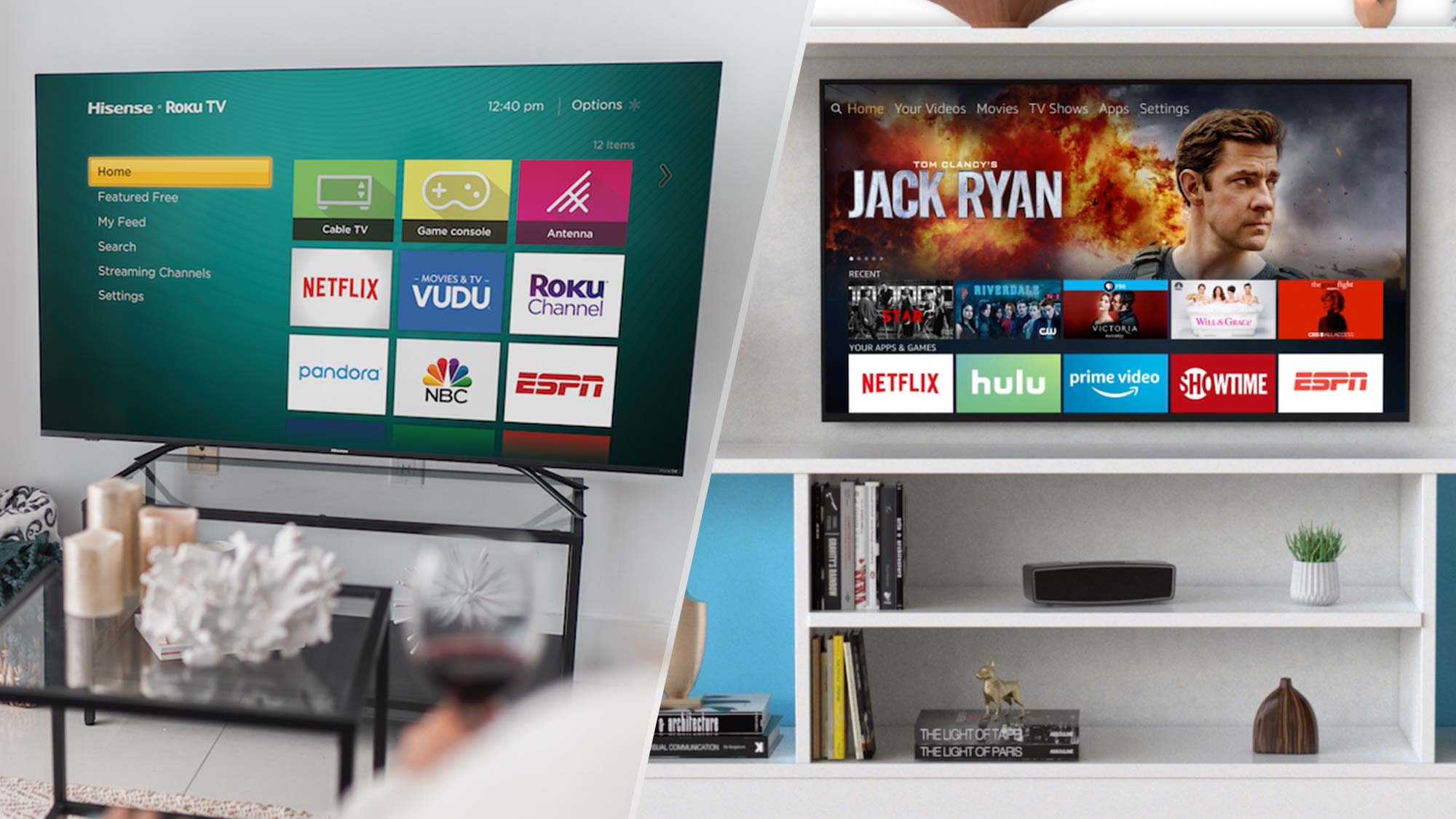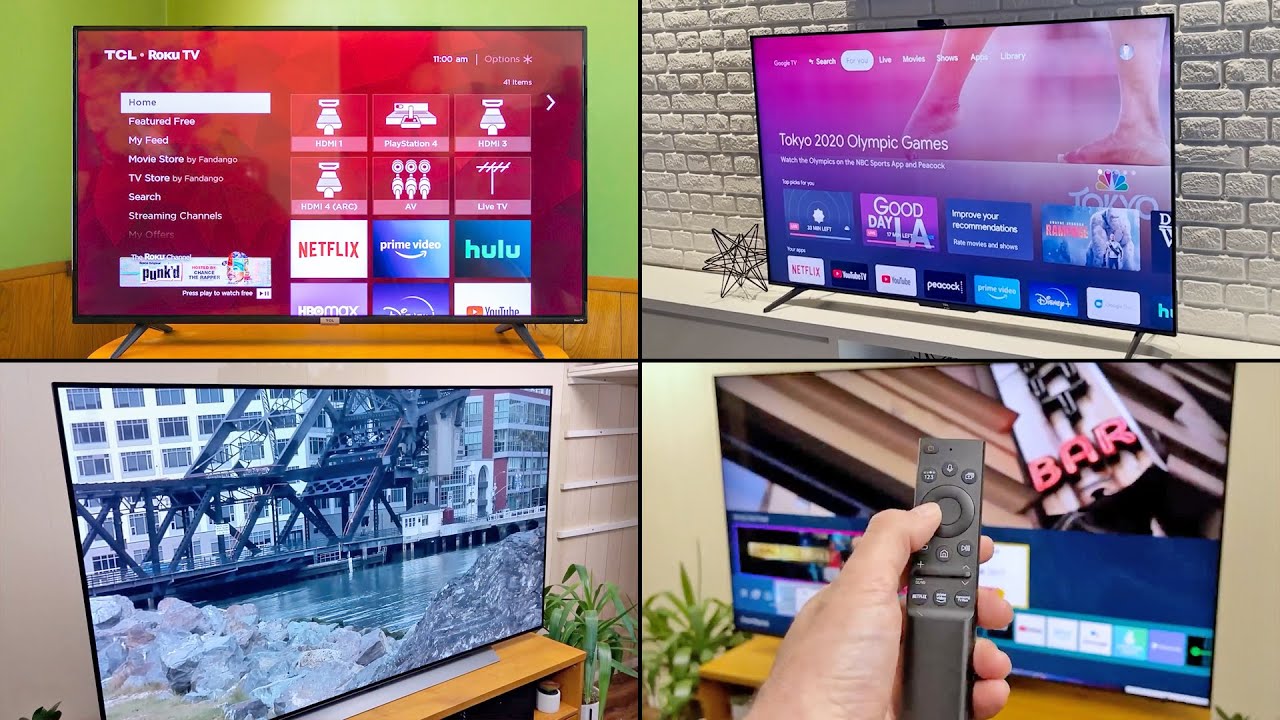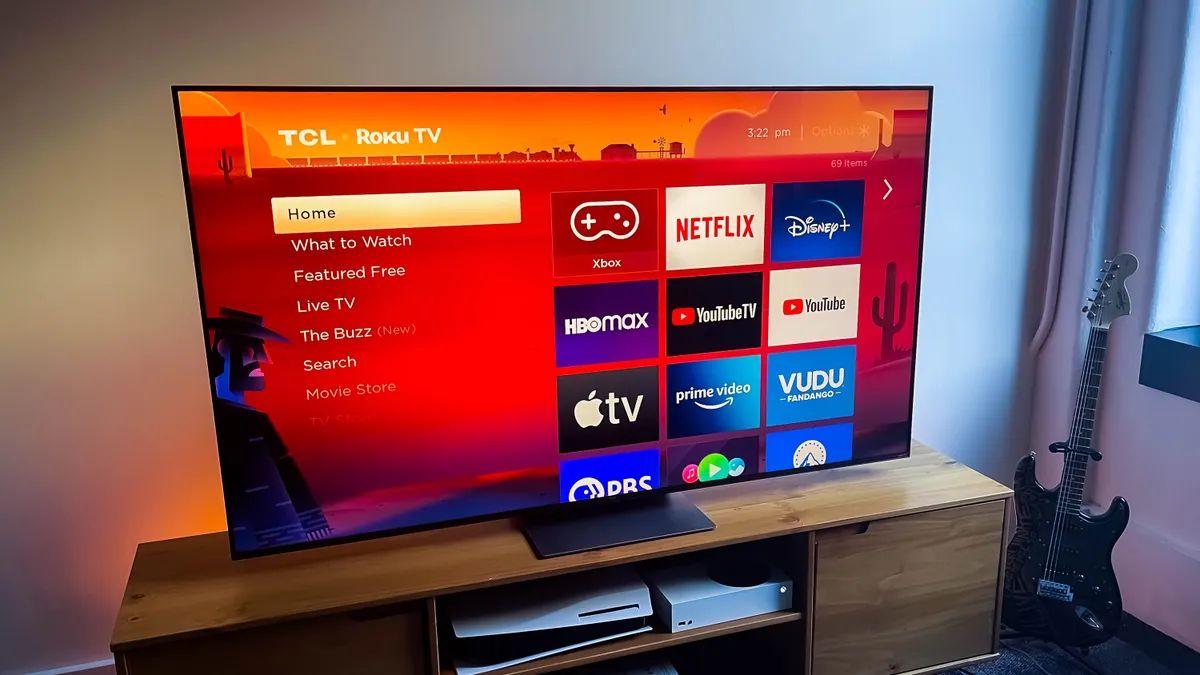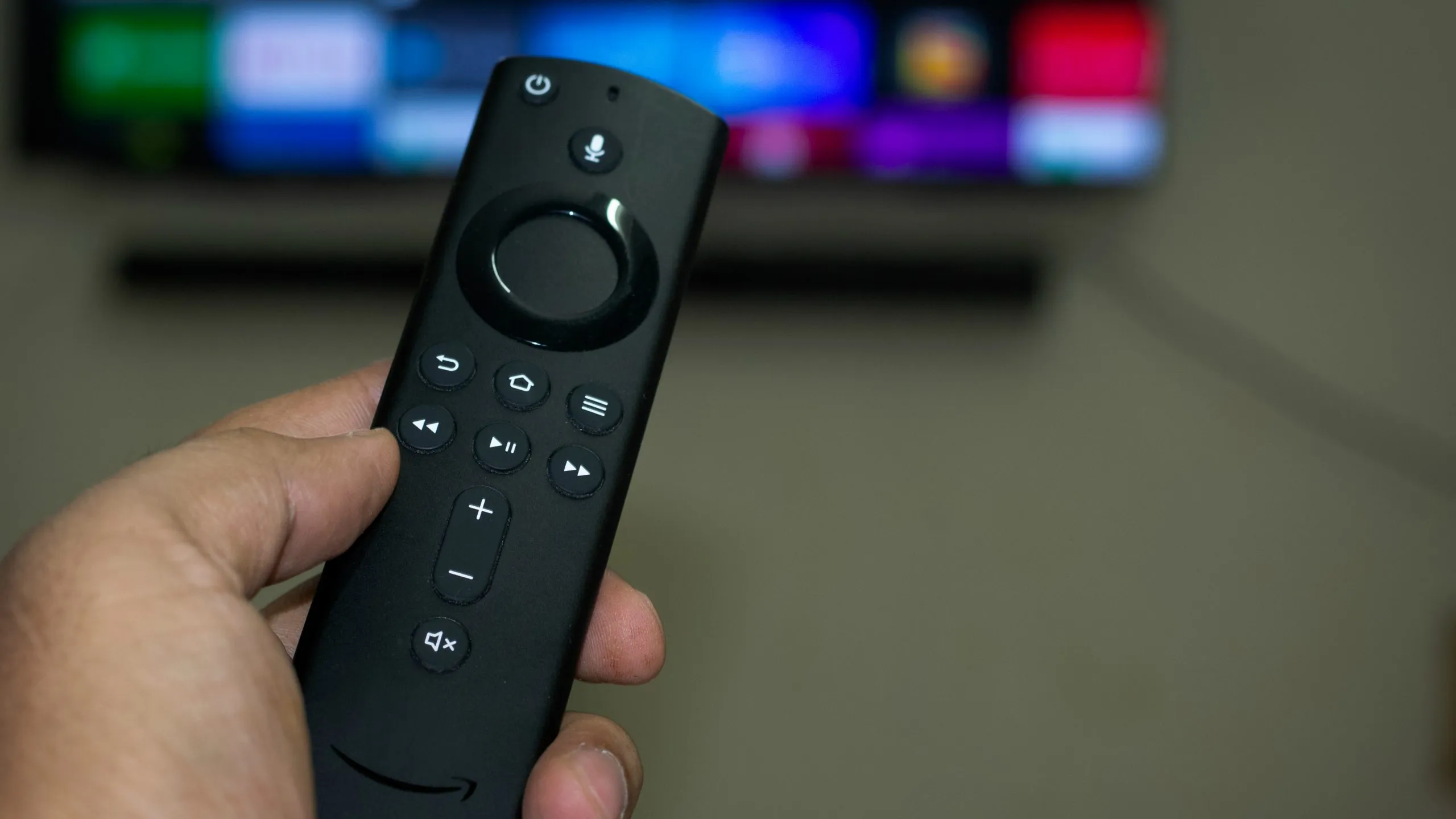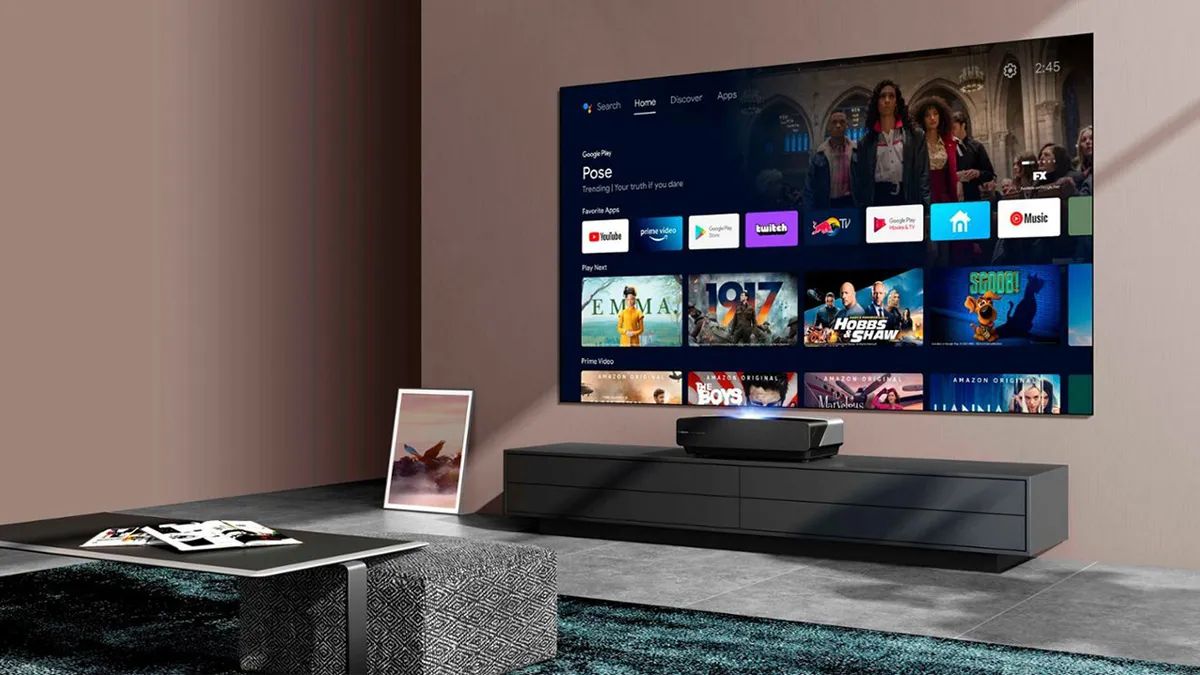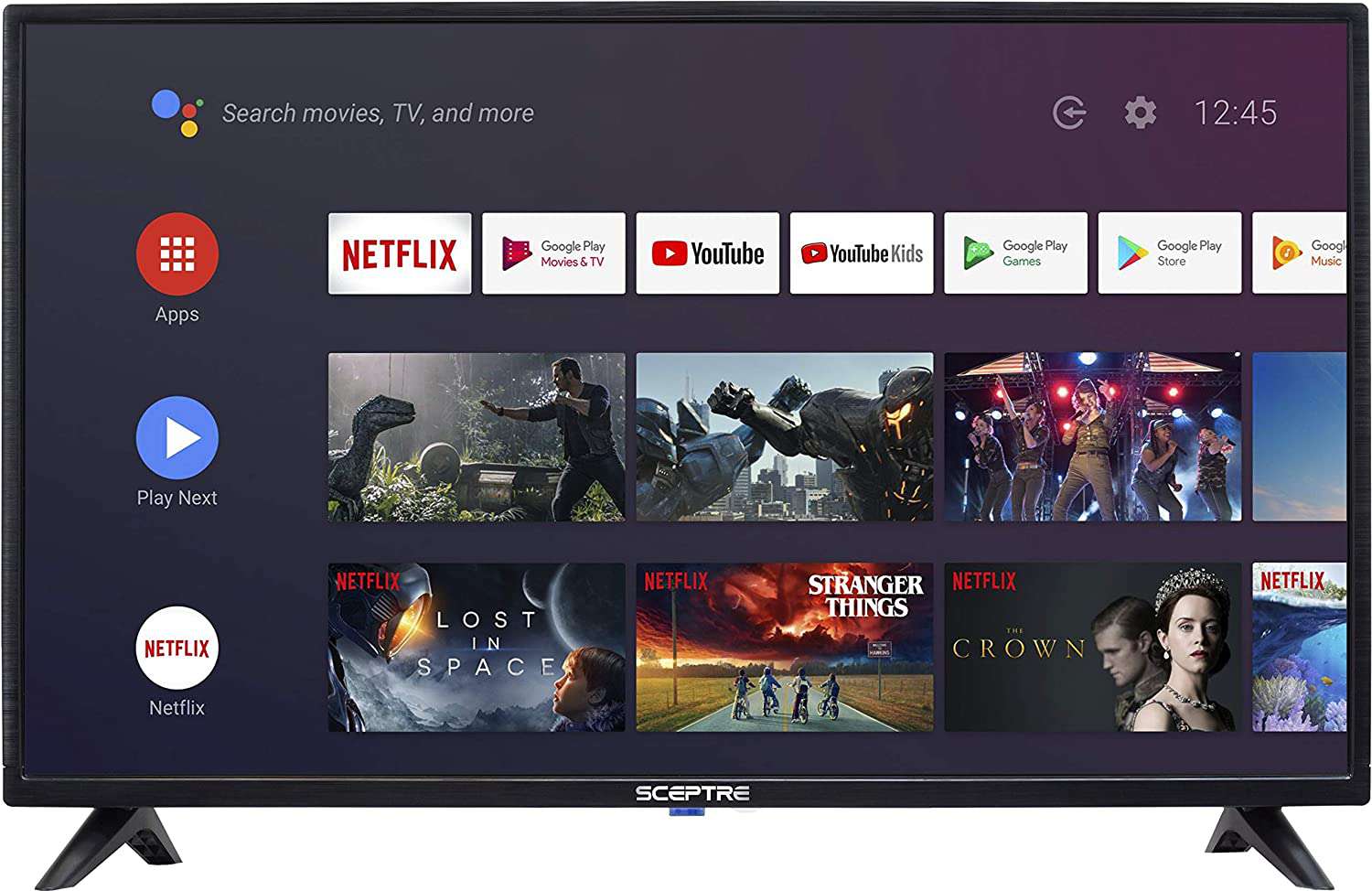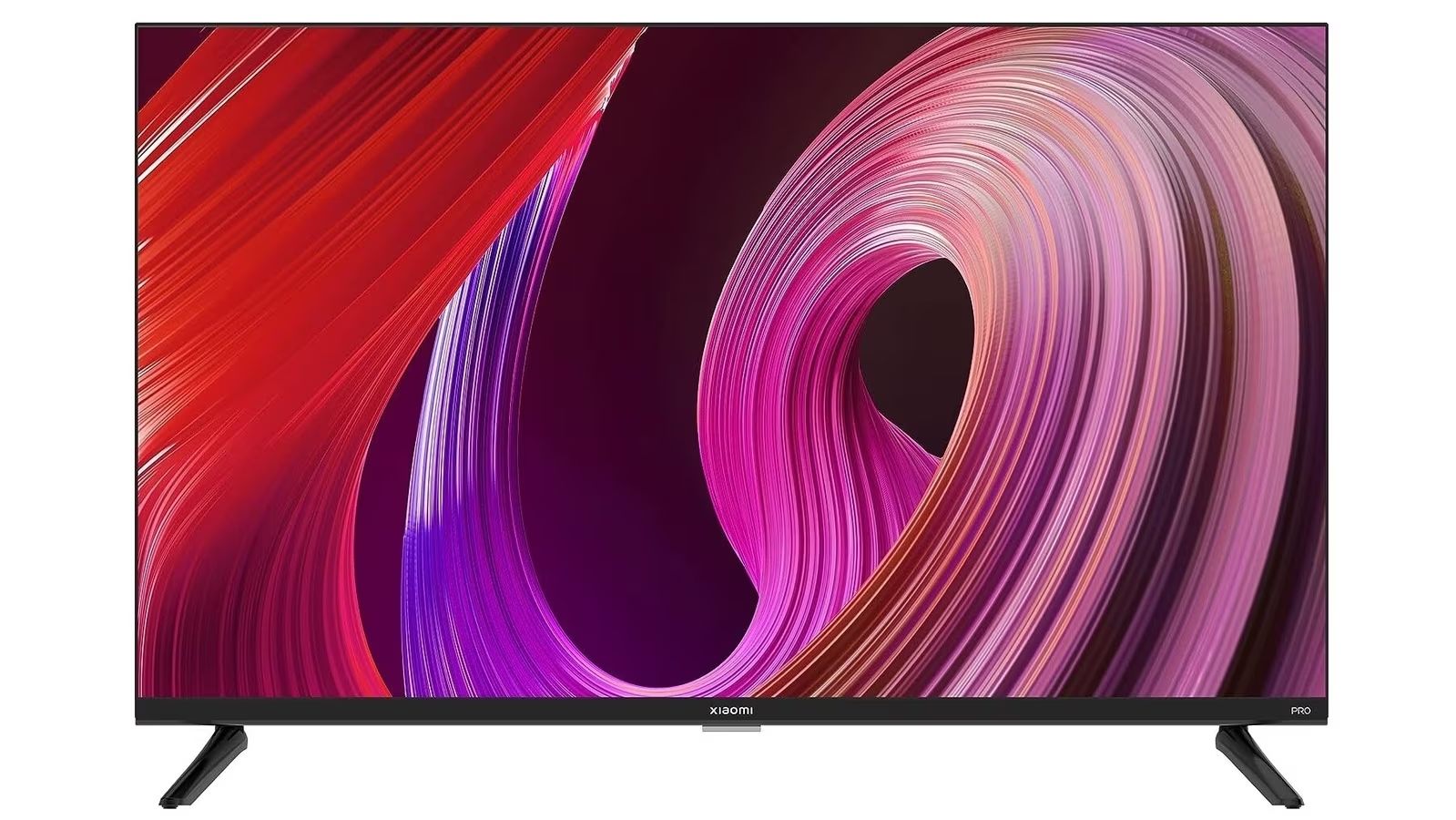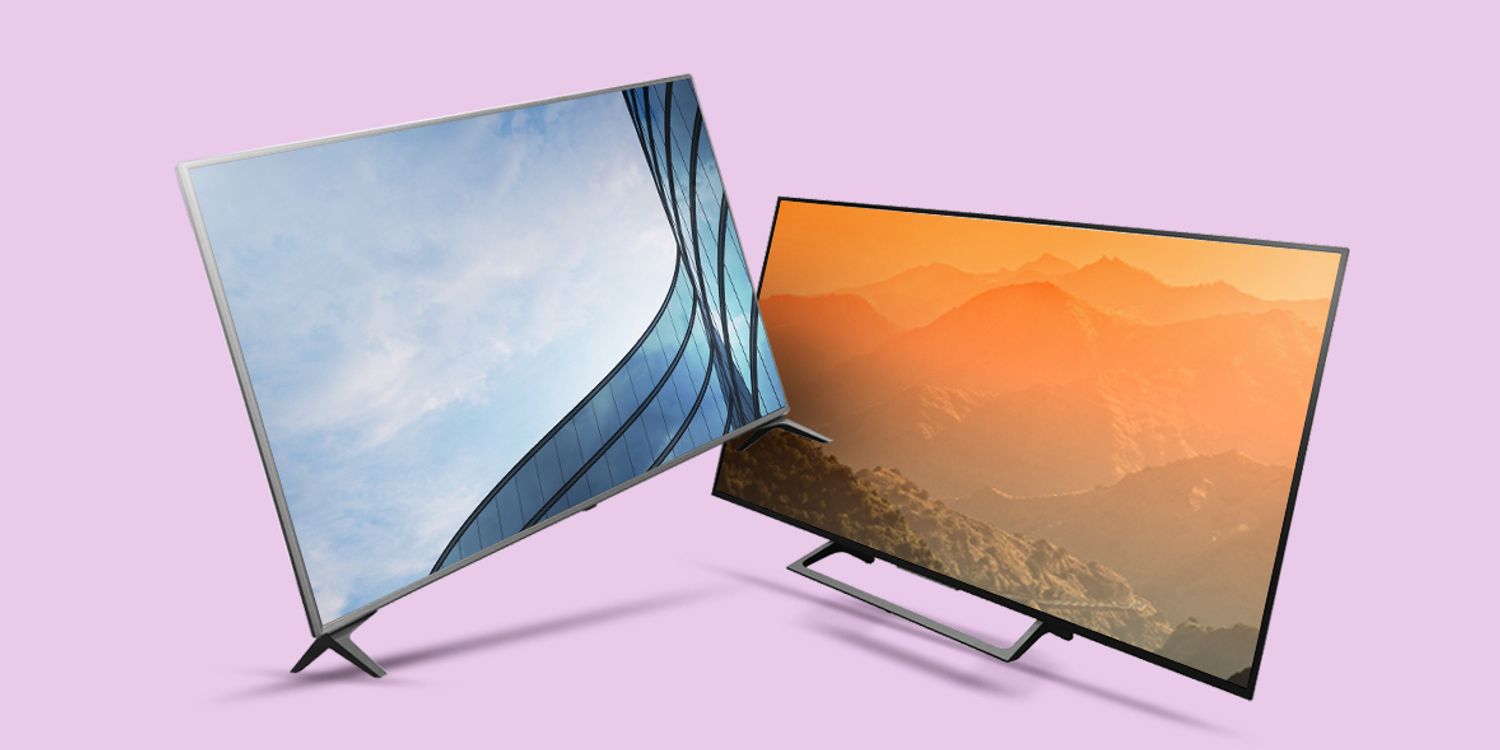The Basics: Fire TV and Smart TV
When it comes to choosing a new television, you’re faced with a plethora of options. With the rise of streaming services and smart technologies, two popular choices are Fire TV and Smart TV. While they may seem similar on the surface, there are key differences that can impact your viewing experience.
Fire TV, developed by Amazon, is a media streaming device that connects to your existing television. It allows you to access a wide range of streaming services such as Netflix, Hulu, and Amazon Prime Video, as well as play games and download apps. It essentially turns your regular TV into a smart TV, with added functionality and convenience.
On the other hand, Smart TVs are televisions that come with built-in internet connectivity and a user interface that allows you to access streaming services and online content directly from the TV itself. Smart TVs often come with pre-installed apps and may have the ability to connect to other smart devices in your home.
One key difference between Fire TV and Smart TV is their hardware. Fire TV is a separate device that needs to be connected to your TV via an HDMI port. It can be a stick or a box-shaped device, depending on the model. Smart TVs, on the other hand, have the necessary hardware built into the television itself, so you don’t need any additional devices to access streaming services.
Another difference is the operating system. Fire TV runs on a modified version of the Android operating system, while Smart TVs may use various operating systems, such as Tizen, WebOS, or Android TV. The operating system can affect the user interface, available apps, and overall functionality of the device.
It’s important to note that while Fire TV requires a separate device, it offers the advantage of being portable. You can easily move it from one TV to another, making it a convenient option if you have multiple TVs in your home. In contrast, a Smart TV is a fixed device and can’t be easily transferred to another television.
Ultimately, the choice between Fire TV and Smart TV comes down to personal preference and needs. If you already have a television and want to add smart features, Fire TV is a great option. It provides a wide range of streaming services, games, and apps in one device. On the other hand, if you’re in the market for a new TV and prefer the convenience of built-in smart features, a Smart TV might be the better choice.
Now that we’ve covered the basics of Fire TV and Smart TV, let’s delve deeper into their streaming capabilities and content selection to help you make an informed decision.
Streaming Capabilities: Fire TV vs. Smart TV
When it comes to streaming capabilities, both Fire TV and Smart TV offer the convenience of accessing a wide range of content directly from your television. However, there are a few key differences between the two.
Fire TV, being a dedicated streaming device, is designed to provide a seamless and optimized streaming experience. It supports popular streaming services like Netflix, Hulu, and Amazon Prime Video, and offers a user-friendly interface for browsing and accessing content. Fire TV also allows you to download apps and games from the Amazon Appstore, expanding your entertainment options even further.
In terms of streaming quality, Fire TV supports up to 4K Ultra HD resolution, HDR, and Dolby Atmos audio, making it a great choice for those who crave high-quality visuals and immersive sound. It also has advanced features like voice search and Alexa integration, allowing you to control your TV and search for content using just your voice.
On the other hand, Smart TVs also offer a wide range of streaming capabilities, typically with support for popular streaming services and apps. However, the streaming experience on Smart TVs may vary depending on the brand and model you choose. Some Smart TVs may have a more limited selection of streaming apps compared to Fire TV, while others may offer a more extensive library.
Streaming quality on Smart TVs can also vary, with some models supporting 4K resolution and HDR, while others may only support lower resolutions. It’s important to check the specifications of the Smart TV you’re interested in to ensure that it meets your streaming requirements.
Additionally, Smart TVs may offer unique features such as screen mirroring, allowing you to display content from your smartphone or tablet directly on your TV screen. Some Smart TVs also have built-in web browsers, giving you the freedom to browse the internet and access online content without the need for additional devices.
Whether you choose Fire TV or a Smart TV, it’s important to have a stable internet connection for smooth streaming. Both devices require an internet connection to access streaming services and download apps, so make sure your home network can handle the demands of streaming.
In summary, when it comes to streaming capabilities, Fire TV offers a dedicated and optimized streaming experience with a wide selection of apps, while Smart TVs may vary in terms of app availability and streaming quality. Consider your streaming preferences and desired features when deciding between Fire TV and a Smart TV.
Now, let’s explore the content selection of Fire TV and Smart TV to see which one offers a wider variety of entertainment options.
Content Selection: Fire TV vs. Smart TV
One of the main factors to consider when choosing between Fire TV and Smart TV is the content selection they offer. Both platforms provide access to a wide range of content, including movies, TV shows, music, and more. However, there are some differences that may influence your decision.
Fire TV excels in terms of content selection. As an Amazon product, it naturally integrates with the extensive Amazon ecosystem, including Amazon Prime Video. With Fire TV, you have access to a vast library of movies and TV series, including exclusive Amazon Originals. In addition, Fire TV provides easy access to popular streaming services like Netflix, Hulu, and Disney+, ensuring you never miss out on your favorite shows or movies.
Furthermore, Fire TV supports various music streaming services, such as Spotify and Amazon Music, allowing you to enjoy your favorite tunes right from your TV. Additionally, the availability of apps and games on Fire TV is vast, with the Amazon Appstore offering a wide range of entertainment options for all ages.
Smart TVs, on the other hand, come with pre-installed streaming apps depending on the manufacturer and model. The content selection on Smart TVs varies, and while they typically include popular streaming services like Netflix and Hulu, they may not have the same level of integration as Fire TV when it comes to exclusive content. However, Smart TVs often have built-in app stores that allow you to download additional apps and expand your content options.
In terms of international content, both Fire TV and Smart TVs offer a global reach. With their extensive app libraries, you can access content from various countries and regions, ensuring a diverse and multicultural viewing experience.
It’s worth noting that while Fire TV offers a superior content selection, Smart TVs with their built-in connectivity enable you to access content directly from the TV without the need for an additional streaming device. This convenience factor may be a deciding factor for some users.
Ultimately, the choice between Fire TV and Smart TV in terms of content selection should be based on your personal preferences and entertainment needs. If you’re an avid Amazon Prime Video user or want access to a wide range of apps and games, Fire TV may be the better choice. However, if you prefer the simplicity of accessing content directly from the TV and don’t rely heavily on exclusive Amazon content, a Smart TV could be a suitable option.
Next, let’s explore the user interface and navigation of Fire TV and Smart TV to see which one offers a more intuitive and seamless experience.
User Interface and Navigation: Fire TV vs. Smart TV
When it comes to user interface and navigation, both Fire TV and Smart TV offer different approaches to help you find and access your favorite content easily. Let’s take a closer look at the user experience of each platform.
Fire TV boasts a user-friendly interface that provides a seamless and intuitive navigation experience. The home screen showcases various content recommendations, making it easy to discover new shows, movies, and apps. The interface is designed with a grid-style layout, allowing you to scroll through different categories and apps effortlessly. Fire TV also incorporates Alexa voice control, enabling you to use voice commands to search for content, control playback, and even interact with smart home devices.
In terms of navigation, Fire TV utilizes a remote control or a voice-enabled device, such as the Amazon Echo, to navigate through menus and make selections. The remote control typically features dedicated buttons for quick access to popular streaming services. The interface is designed to be simple and intuitive, making it accessible for users of all ages.
On the other hand, Smart TVs come with their own unique user interfaces, depending on the brand and operating system. The interface may feature a combination of menus, widgets, and tiles to display content options. Smart TVs also offer various methods of navigation, such as using a remote control, a smart device app, or even voice commands in some models.
While Smart TVs aim to provide a user-friendly experience, the navigation experience can vary depending on the brand and model. Some interfaces may feel cluttered or less intuitive compared to Fire TV’s streamlined grid-style layout. However, the advantage of Smart TVs is that you can access content without the need for an additional device, simplifying the overall viewing experience.
It’s essential to consider your preferences and comfort when it comes to user interface and navigation. If you value a visually pleasing and straightforward interface that integrates well with voice control, Fire TV may be the better choice. However, if you prefer the convenience of a built-in interface directly on your TV and don’t mind a potentially varied user experience, a Smart TV could be the right option for you.
Now that we’ve explored the user interface and navigation of Fire TV and Smart TV, let’s discover some additional features that may sway your decision.
Additional Features: Fire TV vs. Smart TV
Aside from their core functionalities, both Fire TV and Smart TV offer additional features that enhance the overall viewing experience. Let’s explore some of these features and see how they compare.
Fire TV devices, being a creation of Amazon, heavily integrate with their virtual assistant, Alexa. This integration allows you to control your TV using voice commands, search for content, adjust settings, and even interact with other smart devices in your home. With Fire TV, you can take advantage of hands-free control and enjoy a more convenient and seamless experience.
Another notable feature of Fire TV is the ability to play games. The Amazon Appstore offers a variety of gaming apps that can be downloaded and played directly on your TV. From casual games to more immersive experiences, Fire TV provides a gaming platform that extends beyond regular streaming capabilities.
Smart TVs, on the other hand, often offer unique features depending on the brand and model. Some Smart TVs come with built-in web browsers, allowing you to surf the internet directly from your TV screen. This feature can be useful for browsing the web, accessing social media, or even streaming content from websites that may not have dedicated apps.
In addition, certain Smart TVs include screen mirroring capabilities, enabling you to display content from your smartphone or tablet on the TV screen. This feature is convenient when you want to share photos, videos, or presentations with a larger audience.
Smart TVs also have the advantage of integrating with other smart devices in your home. With features like voice control, you can easily control your smart lights, thermostats, and other compatible devices directly from your TV, creating a more connected and smart home ecosystem.
It’s important to note that the availability of these additional features may vary from one brand or model to another. Some Smart TVs may offer more functionality and customization options, while others may have a more limited set of features. It’s crucial to research and compare different models to find the one that aligns with your specific needs and preferences.
In summary, both Fire TV and Smart TV offer unique additional features that can enhance your TV viewing experience. Fire TV excels in its integration with Alexa and gaming capabilities, while Smart TVs often provide features like web browsing, screen mirroring, and integration with other smart devices. Consider your desired functionalities and how these additional features align with your lifestyle when making your decision.
Now, let’s move on to discussing the price and cost aspects of Fire TV and Smart TV to help you make an informed choice.
Price and Cost: Fire TV vs. Smart TV
When it comes to price and cost, there are a few factors to consider when choosing between Fire TV and Smart TV.
Fire TV devices are available in different models, including the Fire TV Stick and Fire TV Cube. The price range varies depending on the features and capabilities of each model. Generally, Fire TV devices are more affordable compared to purchasing a brand new Smart TV. If you already have a TV that you’re satisfied with, adding a Fire TV device can upgrade it without breaking the bank.
In addition to the initial cost of the Fire TV device, it’s important to consider ongoing costs. Some streaming services may require a subscription fee, such as Netflix or Amazon Prime Video. These costs are independent of the platform you choose and are applicable to both Fire TV and Smart TV.
On the other hand, Smart TVs come in a wide range of price points depending on the brand, size, and features. The price can vary significantly, from budget-friendly options to high-end models with advanced technology and larger screen sizes. Smart TVs typically include built-in streaming capabilities, eliminating the need to purchase an additional device for streaming purposes.
While Smart TVs may have a higher upfront cost, they often provide a more integrated and seamless experience compared to pairing a Fire TV device with a regular TV. Keep in mind that Smart TVs may come with additional costs, such as extended warranties or subscription fees for certain services or apps.
When considering the price and cost, it’s also important to factor in the longevity and future-proofing of the technology. Fire TV devices may receive software updates and new features over time, ensuring that your device remains relevant and up to date. However, the hardware itself may become outdated as technology advances. On the other hand, Smart TV manufacturers may release software updates for a certain period of time, but the built-in hardware cannot be easily upgraded.
In summary, Fire TV devices generally offer a more affordable option for transforming a regular TV into a smart entertainment hub. Smart TVs come with a wider range of price points depending on the brand, features, and screen size. It’s important to compare the upfront cost, ongoing subscription fees, and the longevity of the device when considering the price and cost factors.
Now that we’ve discussed the price and cost aspects of Fire TV and Smart TV let’s move on to the final thoughts and considerations to help you make a well-informed decision.
Final Thoughts: Fire TV vs. Smart TV
Choosing between Fire TV and Smart TV ultimately comes down to your personal preferences, needs, and budget. Both options offer convenient access to a wide range of content, but they have distinct differences that can impact your viewing experience.
If you already have a TV that you’re satisfied with and want to add smart functionality, Fire TV devices provide an affordable and portable option. They offer a user-friendly interface, extensive content selection, and additional features like Alexa integration and gaming capabilities. Fire TV is especially ideal for those who are deeply invested in the Amazon ecosystem and enjoy the exclusive content available on Amazon Prime Video. Plus, the flexibility to move the device between TVs is a bonus for those with multiple televisions.
On the other hand, if you’re in the market for a new TV and prefer the convenience of built-in smart features, a Smart TV may be the better choice. Smart TVs come in various price ranges and offer a seamless integration of streaming services, eliminating the need for additional devices. They often provide additional features like web browsing, screen mirroring, and integration with other smart home devices. However, the user interface and available apps can vary depending on the brand and model you choose, so it’s important to research and compare options.
Consider your streaming habits, desired features, and budget when making your decision. It’s also worth noting that both Fire TV and Smart TV require a stable internet connection for optimal performance, so ensure that your home network can handle the demands of streaming.
In the end, there is no definitive winner in the Fire TV vs. Smart TV debate. It all boils down to your personal preferences and priorities. Take the time to evaluate your needs, explore the features and capabilities of each option, and make an informed decision that will best suit your entertainment needs.
We hope that this comparison has helped you gain a better understanding of the differences between Fire TV and Smart TV. Now, it’s time for you to decide which option aligns with your preferences and brings you the ultimate viewing pleasure.







